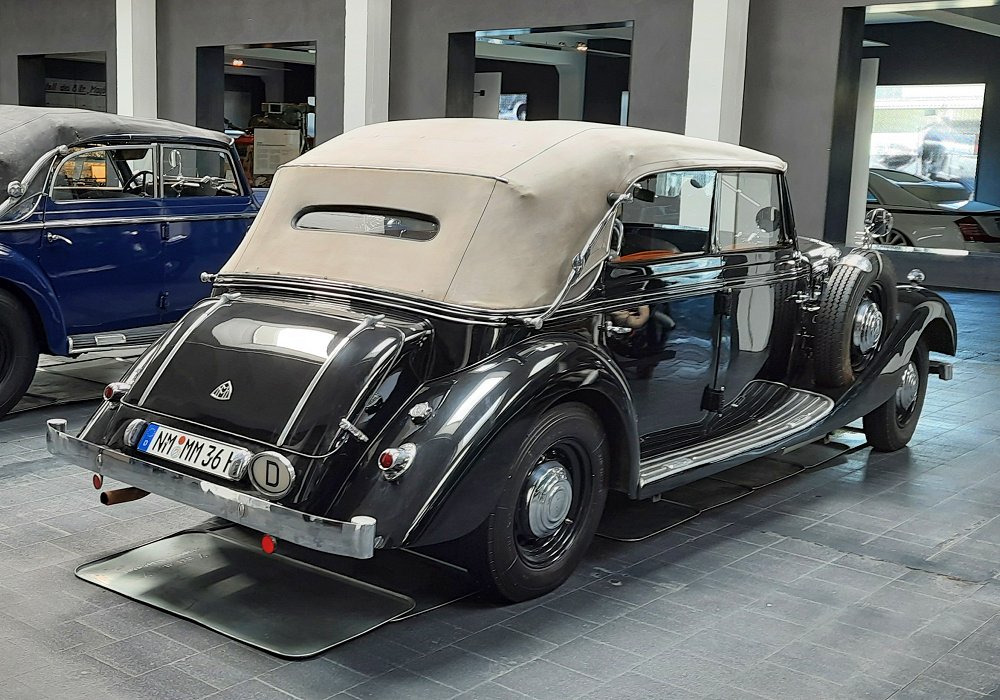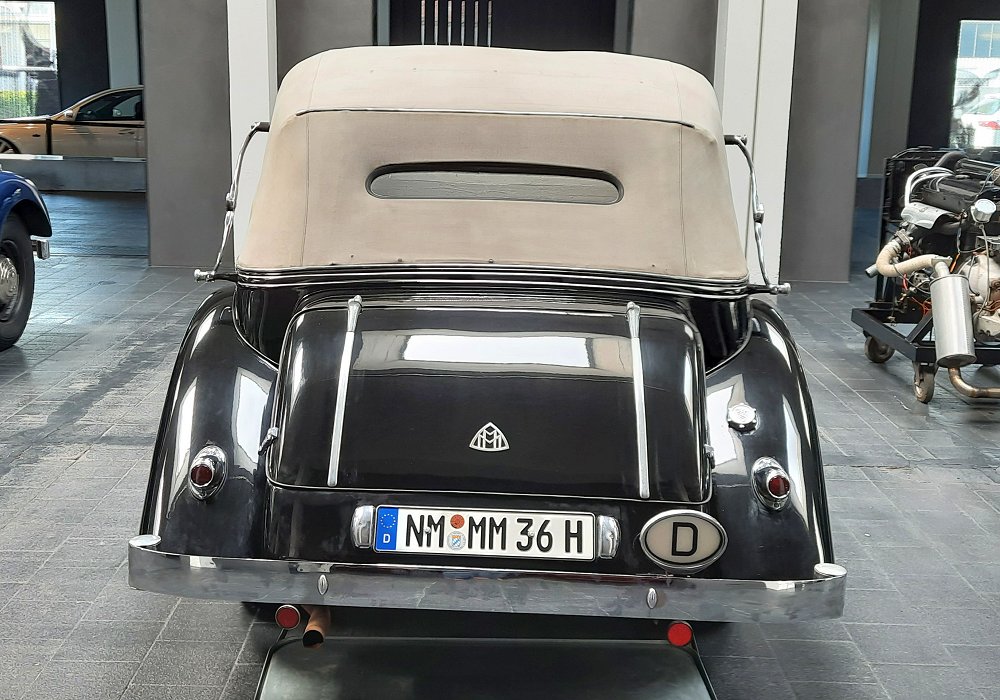Description
The Maybach SW 38 Sport Cabriolet by Spohn was one of the rarest, most glamorous, and most sporting interpretations of Maybach’s second-generation independent-suspension chassis. Built in the late 1930s on the refined SW 38 platform and bodied by Spohn — Maybach’s closest and most accomplished coachbuilding partner — it represented a unique blend of technical sophistication, bespoke luxury and sporting elegance. Among all pre-war Maybachs, the Spohn Sport Cabriolets stand out as some of the most beautiful and desirable, appealing to clients who wanted the prestige of a Maybach combined with the flair and dynamism of a true high-style open tourer.
The SW 38 chassis, introduced in 1936, was powered by Maybach’s advanced 3.8-litre straight-six engine, equipped with a clutch-engaged Roots-type supercharger. In its standard form this engine produced roughly 150–160 horsepower — a very high output for a luxury car of the era and more than sufficient to give the Sport Cabriolet vigorous performance. The engine’s refinement was exceptional. Maybach’s experience in aviation engineering ensured smooth internal balancing, excellent metallurgy and the sort of mechanical precision that allowed the car to cruise at sustained speeds with minimal vibration or noise.
Suspension was a highlight of the SW 38 design. The Schwingachse independent rear suspension system, paired with independent front suspension, provided the car with outstanding ride comfort and directional stability. Unlike many large luxury cars of the 1930s, which still relied on beam axles, the SW-series offered composure and grip far ahead of its time. Combined with a rigid box-section chassis and long wheelbase, the platform lent itself well to both formal limousine bodies and sporting cabriolets. Maybach’s sophisticated preselector gearbox and torque converter further enhanced the driving experience, allowing clutch-free shifting and smooth, uninterrupted acceleration.
The Sport Cabriolet body built by Spohn was distinguished by its more dynamic proportions and its emphasis on elegance with a subtle sporting edge. Unlike the larger four-seat luxury cabriolets or the formal Pullman convertibles, the Sport Cabriolet typically featured a slightly shorter body, cleaner side lines and more pronounced flowing fenders. The doors were often longer and lower, giving the car a sleeker stance, while the gently tapered rear deck accommodated a beautifully tailored folding soft-top that sat flush when lowered. Spohn’s craftsmanship was world-class: each panel was hand-shaped, every curve refined by eye, and all details designed to complement the SW chassis’ inherent grace.
Interior design followed the same philosophy of sport-luxury refinement. Seating was usually more intimate than in the full-size cabriolets, with deeply contoured front seats and a smaller rear bench or occasional seats depending on the commission. The cabin was trimmed in premium leather, polished hardwoods and finely machined metal components. Spohn’s trademark attention to detail could be seen in the stitching, the chrome fittings, the dashboard layout and the carefully integrated accessories such as vanity sets, fold-down trays or bespoke instrumentation. With the roof lowered, the Sport Cabriolet offered an open-air motoring experience that combined the glamour of a high-end tourer with the quiet, composed mechanical character of a Maybach.
On the road, the SW 38 Sport Cabriolet Spohn delivered a more spirited and responsive feel than many other large luxury convertibles of its time. The supercharged straight-six provided smooth, ample power, while the independent suspension absorbed road imperfections with ease. The car felt stable, balanced and capable of maintaining high average speeds on long journeys. Steering was deliberate but precise, and braking performance — via large mechanical or hydraulic drums depending on the specific year — was strong enough to match the car’s performance envelope. Few open luxury cars of the era could match the Maybach’s combination of refinement, power and high-speed composure.
Production of the SW 38 Sport Cabriolet by Spohn was extremely limited. Each example was a bespoke creation, built only for the wealthiest clients and tailored entirely to their personal taste. As a result, surviving cars today are exceptionally rare and often considered crown jewels in major collections, valued for their beauty, craftsmanship and historical importance.
Today, the Maybach SW 38 Sport Cabriolet Spohn stands as one of the finest expressions of pre-war German coachbuilding. It embodies the peak of Maybach’s engineering sophistication and Spohn’s artistic mastery, offering a perfect fusion of luxury and sportiness. Elegant, powerful, beautifully balanced and built to the highest standards of its era, it remains one of the most admired body styles ever mounted on a Maybach chassis — a true automotive masterpiece from the twilight of pre-war European luxury motoring.





